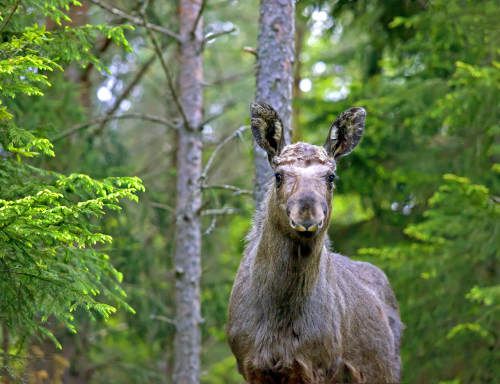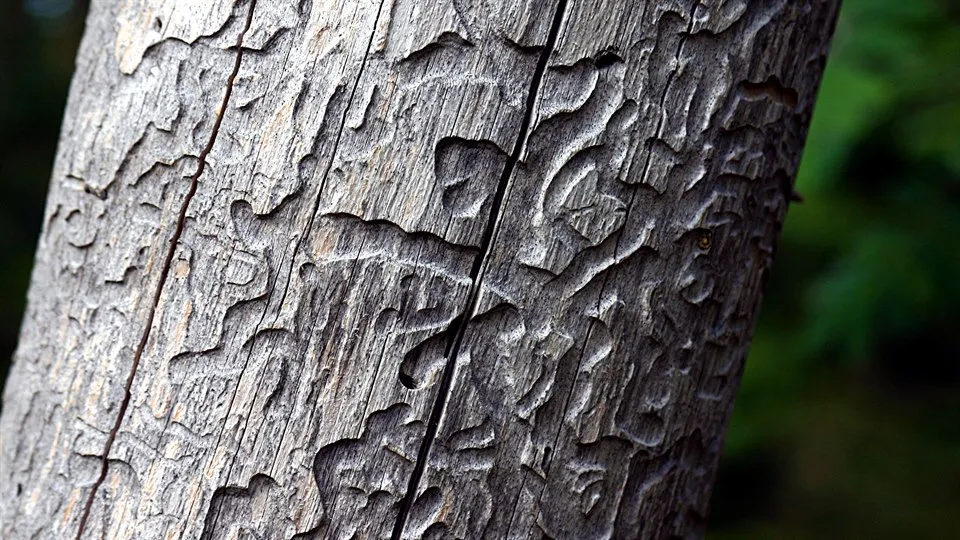Odours as a weapon against damage to forests
Is it possible to communicate with a 5 mm long creature by means of odour? Is it possible to make elks eat only a certain part of young pine trees? If you ask the researchers in the Beska project, who are researching ways of combating damage to forests in mid-Norrland, the answer is unequivocally yes.
The climate is changing and storms and drought will probably become more common in the future. But what happens in the forests when these storms occur? Quite a lot if you ask the forest owners and other people in the forest industry.
If we look at the spruce bark beetle, it occurs naturally in the region. But with storms where trees are damaged and that are sometimes accompanied by heat, these pests can enjoy a real feast. Higher temperatures also bring the problem of the beetle reproducing an extra time. “This quickly makes the forest more vulnerable,” says Bengt-Gunnar Jonsson, researcher at FSCN at Mid Sweden University.
Communication with odour
The researchers in the Beska project are now investigating if it is possible to communicate using odours and steer the beetles to attack prepared logs, known as trap logs, and in this way protect trees that still have a chance to recover.
“By placing out bait substances that attract the spruce bark beetle on the trap logs we can draw them there. At the same time we spray the surrounding forest with substances that they don’t like and this stops them killing the trees and prevents losses for the forest owner,” Bengt-Gunnar goes on.
Expensive little creature
It cannot be denied that this little beetle causes losses. When the spruce bark beetle attacks a tree, it penetrates the tree’s natural defences and this causes the tree to die. It also carries a fungus that helps destroy these important defences. But the problems become particularly serious in warm conditions, which can cause its reproduction rate to double. It is not uncommon at such times for the spruce bark beetles to become so many that surrounding healthy forest also receives visits from these uninvited guests.
The damage they cause is often severe. The value of saw timber falls and if it is necessary to fell forest prematurely due to single dispersed trees the situation is far from satisfactory. When the tree is between 60 and 80 years old, very many things begin to happen and growth is particularly great around that time. “This growth is quite simply lost and this represents money that should instead be deposited in the bank,” says Bengt-Gunnar.
Learning the spruce bark beetles’ language
A machine is currently being procured that will allow chemical structures that run between the beetles’ antennae to be studied. By adding certain substances researchers hope to get readings on the machine and thereby learn more about how the spruce bark beetles communicate with each other.
“Here at Mid Sweden University we have our Chemistry Group who have recognised expertise in odourant communication between insects. Together with the knowledge of forests, which we also have here, this is a unique opportunity to try to help the forest industry reduce its losses and also try to understand what takes place in these attacks that risk becoming increasingly common and due to the changes in the climate that are expected in the future,” Bengt-Gunnar continues.
The threat from the east
But it is not only our native spruce bark beetle that can make things difficult in the forest industry in the long-term. From the east comes a threat in the form of Polygraphus poligraphus, whose natural habitat is Russia. An omnivore that attacks most things in its path.
It is never good when new species establish themselves in the natural environment. We quite simply never know for certain how our existing flora and fauna will be affected so we really want to monitor it and learn as much as we can about how it functions. “We are collaborating on this with Russian researchers whom we have helped develop an odurant to capture examples of the species and monitor their spread to the west,” Bengt-Gunnar says.
Damage from both large and small
But it is not only these small beetles that disrupt life in the forest and that the project is interested in. Considerably larger species can also cause damage that costs forest owners money. One is the elk with its weakness for pine shoots.

Photo: Mostphotos
Elk like to roam through young pine forests in the winter where they eat the young shoots, preventing the tree from shooting up high into the air. Here we are experimenting with forage-inhibiting substances in the pine plantations to persuade elks to leave the top shoots alone. It is difficult to prevent the elks eating but if we can get them to leave the tops alone and eat the side branches instead, the trees will have a chance to grow upwards. “All these measures are naturally about finances and the intention is for the forest industry not to have to do work unnecessarily but get something in return for its efforts,” Bengt-Gunnar says in conclusion.
